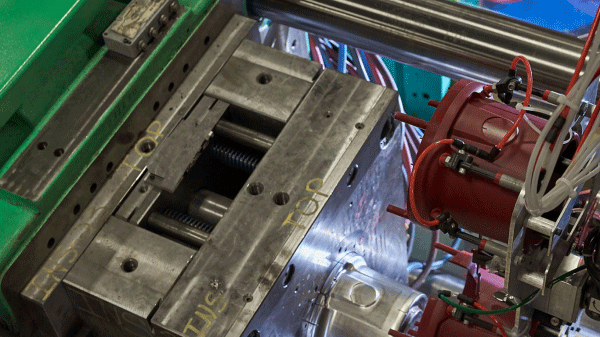What sets injection molding apart as the best process to fabricate complex parts for a variety of highly-sophisticated applications, across numerous markets, is the ability to maintain precise consistency at high volumes while being a cost-effective manufacturing solution. Achieving and maintaining such a distinct level of quality requires an involved, mindful approach at every stage of the fabrication process, taking root at the beginning of the design phase. Designing for an injection-molded plastic part is a robust challenge requiring distinct considerations based on the application and industry for which the part is being crafted, however, there are a number of universal guidelines that can help ensure the highest rate of success when drafting the design for any part. Taking these top tips for designing injection molded parts into consideration at the beginning of the design phase sets up the molded part to meet desired expectations.
Wall Thickness
Wall thickness will ultimately determine the strength, durability, and cosmetics of the part. The acceptable threshold for best wall thickness will vary slightly from material to material, however, consistency is king. Maintaining a uniform thickness throughout the part cuts down on the likelihood of warping, sinks, air gaps, and blemishes introduced during the molding process, specifically due to the part cooling — if the thickness varies greatly, the thinner portions of the part will cool faster than the thicker portions, leading to issues where the part is not uniform. If a consistent thickness is unable to be achieved, reevaluate the design to determine how to gradually shift the change in thickness, as this will avoid potential damage to the end product, and to the mold.
Radiused Edges
While not a required design element, introducing radii versus sharp edges will provide several benefits to the part, as rounded corners allow for improved material flow during the injection. Because of this, introducing rounded edges helps reduce stress concentrations, and decreases the potential for fractures and cracks during the injection molding process, while also allowing for easier, cleaner part ejection. When introducing radii into the design, the edges should retain the same thickness as the walls for consistency.
Draft Angle
Similar to radiused edges, introducing a draft into the part design will reduce issues with ejection, such as sticking to the core, as well as minimize the visibility of ejector pin marks on the show face of the finished part. The draft should not be a dramatic angle on the face of the parts, but rather should be one to three degrees depending on if the face of the product is intended to be smooth (less draft) or textured (greater draft).
Gate Location
The gates will maintain the precise pressure and flow of material throughout the injection molding process. They connect the runner and sprue, distributing the material throughout the mold, thus, their location and size will play an imperative role in the successful molding of the part. For larger parts, a larger gate would be ideal, to cut down on molding time. However, a smaller gate will provide a more cosmetically appealing end product but will take longer, and require higher pressure, to maintain a consistent fill. Gates should be placed in areas to best avoid obstructions, voids, and sinks, so consider placing the gate closer to the heaviest cross-section, while reducing the length of the flow path.
These tips are not all-encompassing of the considerations that should be taken when designing parts for injection plastic molding, but they establish a strong foundation for approaching the design phase from an informed perspective on the actual manufacturing mechanics at work. While concepting the design, consider getting in touch with experts and professionals in the injection molding process to ensure the part being drafted will be ready long before being handed off. For more information on the injection molding process, or for more information on how Hansen Plastics can facilitate the design process for your parts and tools, visit HansenPlastics.com.



